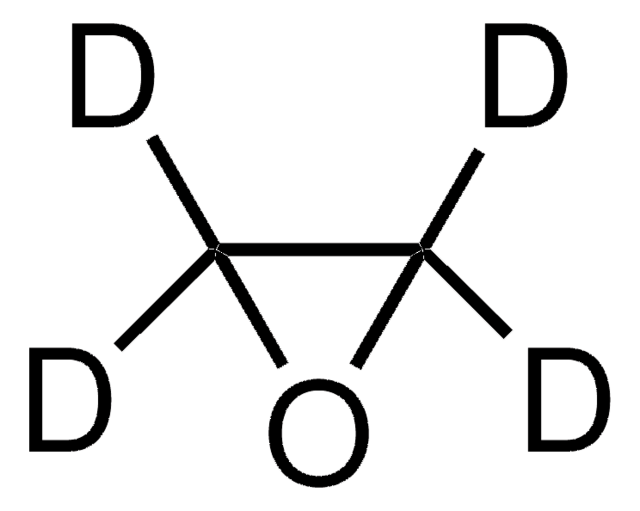Kluczowe dokumenty
743593
Ethylene oxide
≥99.9%
Synonim(y):
Oxirane
About This Item
Polecane produkty
Poziom jakości
Próba
≥99.9%
Formularz
gas
współczynnik refrakcji
n20/D 1.3597 (lit.)
bp
10.7 °C (lit.)
mp
−111 °C (lit.)
gęstość
0.882 g/mL at 25 °C (lit.)
temp. przechowywania
2-8°C
ciąg SMILES
C1CO1
InChI
1S/C2H4O/c1-2-3-1/h1-2H2
Klucz InChI
IAYPIBMASNFSPL-UHFFFAOYSA-N
Szukasz podobnych produktów? Odwiedź Przewodnik dotyczący porównywania produktów
Opakowanie
Inne uwagi
Polecane produkty
produkt powiązany
Hasło ostrzegawcze
Danger
Zwroty wskazujące rodzaj zagrożenia
Zwroty wskazujące środki ostrożności
Klasyfikacja zagrożeń
Acute Tox. 3 Inhalation - Acute Tox. 3 Oral - Carc. 1B - Chem. Unst. Gas A - Eye Dam. 1 - Flam. Gas 1A - Muta. 1B - Press. Gas Liquefied gas - Repr. 1B - Skin Corr. 1B - STOT RE 1 - STOT SE 3
Organy docelowe
Central nervous system, Nervous system, Respiratory system
Kod klasy składowania
2A - Gases
Klasa zagrożenia wodnego (WGK)
WGK 3
Temperatura zapłonu (°F)
-4.0 °F - closed cup
Temperatura zapłonu (°C)
-20.0 °C - closed cup
Wybierz jedną z najnowszych wersji:
Masz już ten produkt?
Dokumenty związane z niedawno zakupionymi produktami zostały zamieszczone w Bibliotece dokumentów.
Klienci oglądali również te produkty
Nasz zespół naukowców ma doświadczenie we wszystkich obszarach badań, w tym w naukach przyrodniczych, materiałoznawstwie, syntezie chemicznej, chromatografii, analityce i wielu innych dziedzinach.
Skontaktuj się z zespołem ds. pomocy technicznej











